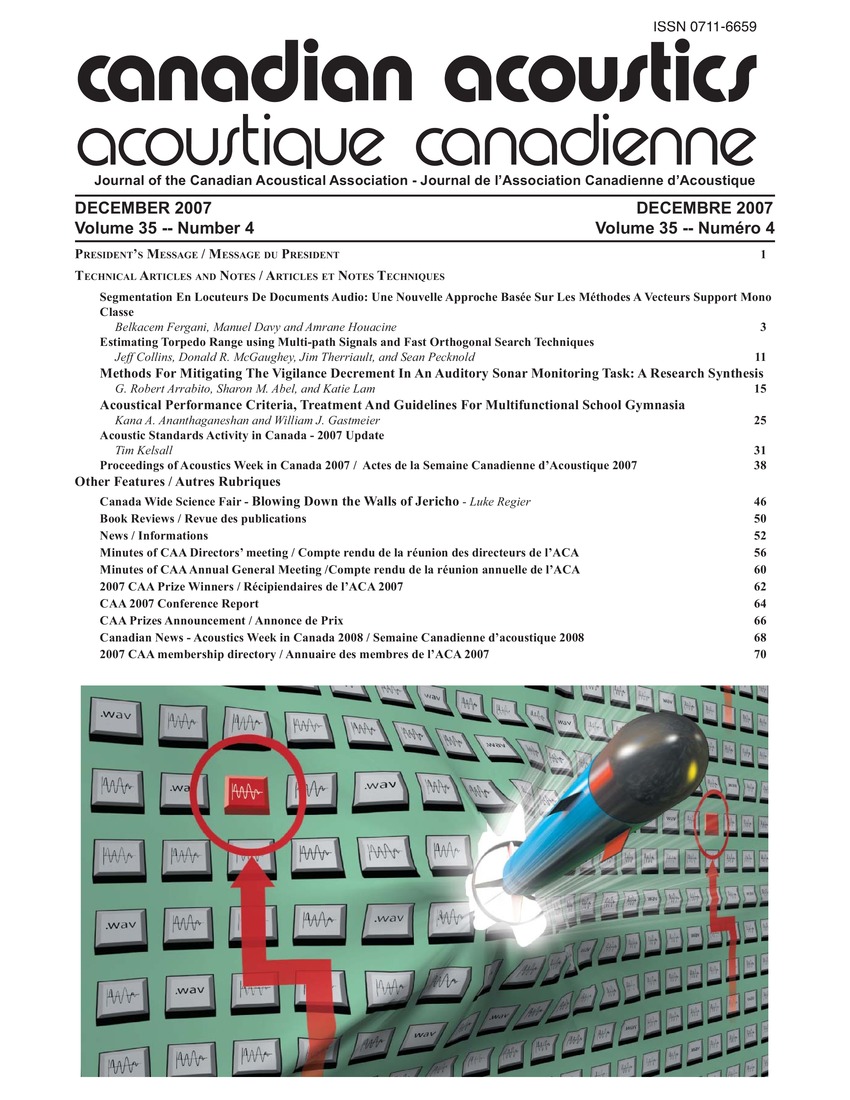Estimating Torpedo range using multi-path signals and fast orthogonal search techniques
Keywords:
Computer simulation, MATLAB, Range finders, Spectrum analysis, Torpedoes, Fast orthogonal search techniques, Surface-reflection signals, Torpedo Detection Algorithm (TDA), Torpedo range estimation algorithmAbstract
This paper introduces a torpedo range estimation algorithm, which is primarily developed in MATLAB. The Torpedo Detection Algorithm (TDA) employs the fast orthogonal search (FOS) algorithm for high-resolution spectral analysis to detect the closely spaced direct-path and surface-reflection signals. When a direct-path and surface-reflection are found, an automatic alert of a possible torpedo detection is initiated. In simulation, the existence of a torpedo and its range are found as it travels from 5000 to 750 metres from the receiver. Simple trigonometric expressions are used to estimate the torpedo's range given the two frequencies estimated by FOS and a priori information about the torpedo speed and depth. The predicted and actual ranges for a simulation in which a torpedo approaches from 5000 to 750 metres is shown.Additional Files
Published
How to Cite
Issue
Section
License
Author Licensing Addendum
This Licensing Addendum ("Addendum") is entered into between the undersigned Author(s) and Canadian Acoustics journal published by the Canadian Acoustical Association (hereinafter referred to as the "Publisher"). The Author(s) and the Publisher agree as follows:
-
Retained Rights: The Author(s) retain(s) the following rights:
- The right to reproduce, distribute, and publicly display the Work on the Author's personal website or the website of the Author's institution.
- The right to use the Work in the Author's teaching activities and presentations.
- The right to include the Work in a compilation for the Author's personal use, not for sale.
-
Grant of License: The Author(s) grant(s) to the Publisher a worldwide exclusive license to publish, reproduce, distribute, and display the Work in Canadian Acoustics and any other formats and media deemed appropriate by the Publisher.
-
Attribution: The Publisher agrees to include proper attribution to the Author(s) in all publications and reproductions of the Work.
-
No Conflict: This Addendum is intended to be in harmony with, and not in conflict with, the terms and conditions of the original agreement entered into between the Author(s) and the Publisher.
-
Copyright Clause: Copyright on articles is held by the Author(s). The corresponding Author has the right to grant on behalf of all Authors and does grant on behalf of all Authors, a worldwide exclusive license to the Publisher and its licensees in perpetuity, in all forms, formats, and media (whether known now or created in the future), including but not limited to the rights to publish, reproduce, distribute, display, store, translate, create adaptations, reprints, include within collections, and create summaries, extracts, and/or abstracts of the Contribution.


